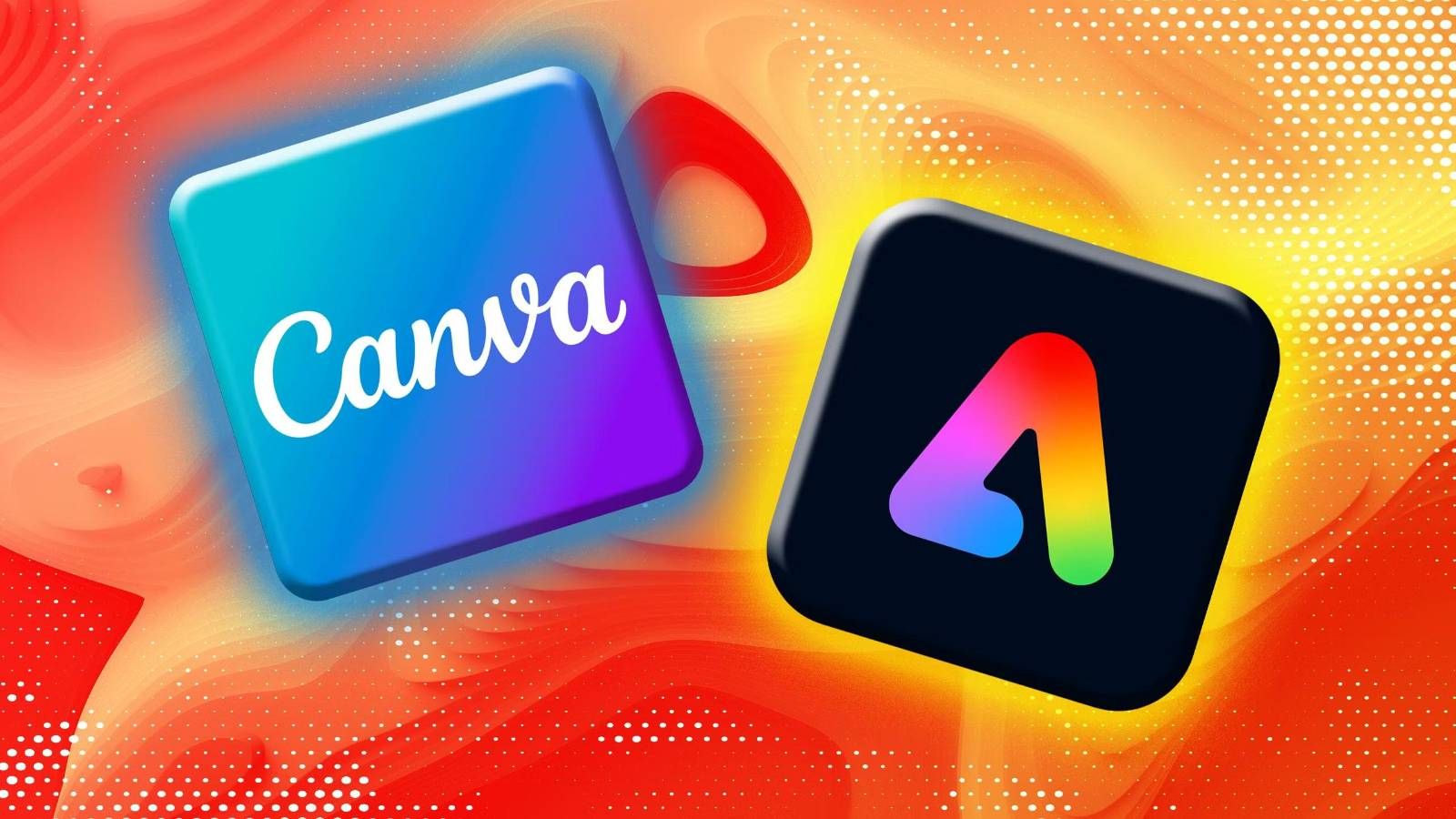

In the ever-evolving landscape of digital design tools, creators are constantly seeking the best platforms to bring their visions to life. Canva and Adobe Express have emerged as popular choices, each offering unique features and capabilities. Let’s learn more about this topic below with Unicycle Hero, as we explore which tool might be the better fit for creators in various scenarios.
Canva and Adobe Express are both online graphic design tools that cater to a wide range of users, from beginners to professionals. Canva, launched in 2013, has gained immense popularity for its user-friendly interface and vast library of templates. Adobe Express, formerly known as Adobe Spark, is a more recent offering from the software giant Adobe, known for its professional-grade creative applications.
Canva’s strength lies in its simplicity and accessibility. It offers a drag-and-drop interface that allows users to create designs quickly without requiring extensive design knowledge. The platform provides a wide array of templates for various purposes, from social media posts to presentations and marketing materials. Canva’s library of stock images, fonts, and design elements is extensive, making it easy for users to find what they need.
Adobe Express, on the other hand, leverages Adobe’s expertise in professional design software. It offers a more streamlined approach compared to other Adobe products, making it accessible to casual users while still providing powerful features. Adobe Express focuses on creating content for social media, web graphics, and short videos. It integrates well with other Adobe products, allowing for seamless workflows for those already in the Adobe ecosystem.
When it comes to features, both Canva and Adobe Express offer a robust set of tools for creators. Canva’s strength lies in its vast template library, covering a wide range of design needs. From business cards to Instagram stories, Canva has pre-designed templates that users can customize to their liking. The platform also offers a collaborative feature, allowing team members to work on designs together in real-time.
Adobe Express, while having fewer templates than Canva, offers high-quality designs that align with current trends. Its templates are often more sophisticated and can be easily customized. One of Adobe Express’s standout features is its ability to create and edit short videos, something that Canva has only recently begun to offer. Adobe Express also provides access to Adobe Stock, giving users a vast library of professional-grade images and graphics.
Both platforms offer mobile apps, allowing users to create and edit designs on the go. Canva’s mobile app is particularly robust, offering nearly all the features of its desktop version. Adobe Express’s mobile app, while functional, is more limited compared to its web version. However, it excels in quick social media post creation and editing.
Canva’s design capabilities are geared towards simplicity and speed. Its drag-and-drop interface allows users to quickly place elements, adjust layouts, and apply styles. The platform offers a good selection of fonts and the ability to upload custom fonts. Canva also provides basic photo editing tools, allowing users to adjust brightness, contrast, and apply filters without leaving the platform.
Adobe Express, drawing from Adobe’s rich history in design software, offers more advanced design capabilities. Users can access sophisticated typography options, including the ability to curve and manipulate text. The platform also provides more advanced photo editing tools, leveraging Adobe’s expertise in image manipulation. Adobe Express’s integration with other Adobe products like Photoshop and Illustrator allows for seamless workflow between applications.
Collaboration is a key feature for many creators, and both platforms offer tools to facilitate teamwork. Canva’s collaboration features are more developed, allowing multiple users to work on a design simultaneously. The platform also offers team folders and the ability to set permissions for different team members. Canva’s commenting system makes it easy for team members to provide feedback on designs.
Adobe Express’s collaboration features, while present, are not as robust as Canva’s. The platform allows for sharing designs and collecting feedback, but real-time collaboration is limited. However, Adobe Express integrates well with other Adobe products, making it easier for teams already using Adobe Creative Cloud to incorporate Express into their workflow.
Pricing is often a crucial factor for creators when choosing a design tool. Both Canva and Adobe Express offer free versions with limited features, as well as paid plans with more advanced capabilities. Canva’s free version is quite generous, providing access to a large number of templates and design elements. The paid version, Canva Pro, offers additional features like brand kit storage, background removal, and access to premium stock images.
Adobe Express also offers a free version with basic features. Its paid version, part of the Adobe Creative Cloud subscription, provides access to more advanced tools, Adobe Fonts, and Adobe Stock. For users already subscribed to Adobe Creative Cloud, Adobe Express comes as an additional tool at no extra cost, making it a cost-effective option for those in the Adobe ecosystem.
Accessibility is another important consideration. Canva’s user-friendly interface makes it highly accessible to beginners and non-designers. Its extensive library of templates and drag-and-drop functionality allow users to create professional-looking designs quickly. The platform also offers numerous tutorials and design courses to help users improve their skills.
Adobe Express, while still user-friendly, has a slightly steeper learning curve compared to Canva. However, for users familiar with other Adobe products, the interface and workflow will feel intuitive. Adobe Express also provides tutorials and resources to help users get started and improve their design skills.
Deciding between Canva and Adobe Express ultimately depends on your specific needs as a creator. Canva is an excellent choice for those who prioritize ease of use and quick design creation. Its vast template library and intuitive interface make it ideal for social media marketers, small business owners, and casual designers who need to create professional-looking graphics quickly.
Adobe Express, on the other hand, might be the better choice for those who require more advanced design capabilities or are already part of the Adobe ecosystem. Its superior video editing features and integration with other Adobe products make it a powerful tool for content creators who work across multiple mediums. Adobe Express is particularly suited for social media content creators, digital marketers, and professionals who need to create both static and video content.
For social media managers and digital marketers, both platforms offer valuable tools. Canva’s extensive template library and easy-to-use interface make it great for creating a high volume of social media posts quickly. Adobe Express’s video editing capabilities and integration with Adobe Stock give it an edge for creating more dynamic content.
Graphic designers and visual artists might find Adobe Express more aligned with their needs. Its advanced design tools and integration with other Adobe products allow for more creative freedom and professional-grade output. However, Canva’s collaboration features and ease of use make it a good choice for designers working in teams or with clients who need to provide input.
Small business owners and entrepreneurs might lean towards Canva for its all-in-one solution. The platform’s ability to create everything from business cards to presentations in one place makes it a versatile tool for various business needs. Adobe Express, while powerful, might be overkill for those with simpler design requirements.
Both Canva and Adobe Express continue to evolve, adding new features and capabilities. Canva has been expanding its video editing tools and exploring AI-powered design assistance. These developments could make it an even more comprehensive solution for creators in the future. Unicycle Hero anticipates that Canva will continue to focus on user-friendly innovations that cater to a wide range of users.
Adobe Express, being part of the larger Adobe ecosystem, is likely to see more integration with Adobe’s professional tools. This could potentially bridge the gap between casual and professional design tools, offering users a smoother transition as their skills and needs evolve. Adobe’s focus on AI and machine learning could also lead to more advanced automated design features in Express.
As the digital design landscape continues to evolve, both platforms are likely to adapt to changing user needs and technological advancements. Creators should keep an eye on these developments to ensure they’re using the tool that best suits their evolving requirements.
In the Canva vs Adobe Express debate, there’s no clear winner as both platforms offer valuable tools for creators. Canva excels in ease of use, template variety, and collaboration features, making it ideal for quick, professional-looking designs.